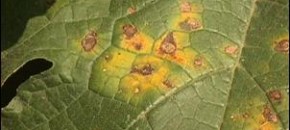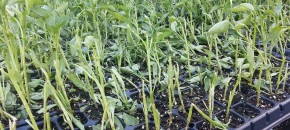5-27-14 Tomato Report – Click to Download Disease severity values (DSVs) for early blight, septoria leaf spot, and tomato anthracnose development are determined daily based on leaf wetness (due to rainfall, dew) and air temperature. On a daily basis DSV values can range from 0 to 4 where 0 = no chance for disease development […]
Continue reading...Vegetable Disease Briefs 5-25-14
Hail damage has been reported in areas of southern New Jersey. Cucurbit downy mildew has been reported on cucumber as far north as Southern Georgia. To track cucurbit downy mildew in the US please visit http://cdm.ipmpipe.org/ No late blight has been reported in the region to date and has only been found as far north […]
Continue reading...Vegetable Disease Update 5-25-14
Potato Strawberry Tomato Potato Blackleg is caused by Erwinia spp. which also cause ‘soft rots’. The bacteria which lead to the aerial phase of Blackleg are soil-borne (originate from old crop debris) and spread by rainfall, overhead irrigation and wind.
Continue reading...Recognizing Angular Leaf Spot in Cucurbits

Angular leaf spot is common in New Jersey and the region. It often shows up during cool, wet weather and isolated rain. Angular leaf spot will first appear as, small water-soaked lesions which will expand until they reach a larger leaf vein resulting in the angular looking symptoms on leaves. Under heavy disease pressure, the bacteria will […]
Continue reading...Controlling Phytophthora Blight in Pepper
With the wet weather, conditions for the crown rot phase of Phytophthora blight have increased. Phytophthora blight typically develops in low-lying areas of fields after a heavy rain and can spread quickly throughout the entire field. Planting on a ridge or raised, dome-shaped bed will help provide better soil drainage.
Continue reading...Severe Hail in Southern New Jersey

On Thursday night areas of southern New Jersey were hit with severe hail. A significant amount of damage was done on all crops across a few of counties (Salem, Gloucester, and Cumberland).
Continue reading...